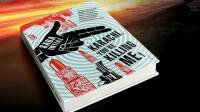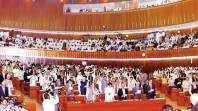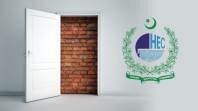Recent years have seen a dearth of cultural events in Pakistan. Concerts, now rare, take place in cramped studios, theatre productions have dwindled, and cultural festivals seem to have died (the Rafi Peer Youth Festival and the Kara Film Festival come to mind), with the Karachi Literature Festival earlier in the year simply an exception. However, fashion weeks remain the exception to this trend. Corporations unwilling to sponsor a proper concert seem to lack no amount of enthusiasm when it comes to endorsing fashion weeks that are a dime a dozen.
Fashion has been quick to monopolise the category of cultural entertainment, and the numerous fashion weeks are a manifestation. The fashion industry has become one of the few rapidly growing industries in the country, and fashion consumerism seems to have grown into a national obsession (hello, Lawn Wars!). We seem to have reached saturation point with the sheer abundance of events showcasing designer collections.
One too many misleadingly self-important interviews in the Western press by some models and designers haven’t exactly helped matters. Pandering to foreign commentators for whom, in the words of Pankaj Mishra “the Taliban are forever 60 miles away from Islamabad”, has meant portraying themselves as saviours of freedom in the country’s fight against extremism, armed with mid-riff baring tops and cropped pants, instead of simply the creative business people they are.
The silver lining, however, is that it has occasioned some excellent satire on social networking sites and blogs, including a mythical organisation calling itself Fashion Against the Taliban (FAT). And the fodder for satire is plenty, from model Mehreen Syed declaring, with sincerity and vehemence, a la Martin Luther King: ‘I have a dream’ at the launch of her fashion agency, to a now-viral video on the Guardian website covering a fashion week in Islamabad that dramatically declares it was “held in a hotel basement that conveniently doubles as a bomb shelter.”
Predictably enough, the Pakistani fashion industry boasts of gargantuan egos that are hardly proportional to its actual size, thereby necessitating its split into several representative fashion councils, with acronyms barely distinguishable from each other, seeing as they’re composed of various permutations of the same few words. From the outset of 2012, the country has seen far too many fashion weeks than should be permitted surely-- in all of its major cities, and in some several times over.
However, the latest PFDC Sunsilk Fashion Week (PSFW) is the most no-nonsense variant, with its sixth run in as many years, consistent in terms of both quality and frequency. Operated like a well-oiled, albeit glamorous, business machine, with the indomitable Sehyr Saigol at the helm, the fashion industry did what they do best. The collections gracing the ramps spoke volumes about the establishment of prêt in Pakistan. Pakistani fashion seems to have moved firmly beyond its cumbersome couture. What was shown at PSFW were not your trousseau items, but proper ready-to-wear collections that were, by and large, edgy, modern and in keeping with international fashion trends. The clothes were luxurious without being overdone; truly a sight for sore, bling-weary eyes. Karma’s Cat in the Hat theme, Fahd Hussayn’s dramatic black-white-beige collection, Sadaf Malaterre’s surrealistic prints, and finally HSY’s white and gold finale upped the drama, and provided the fashion circus Lahore’s entertainment-starved populace seemed to have come in droves for.
For those of us who may not follow trends slavishly, but would still like to steer clear of looks that would necessitate social ostracism (we know English-speaking Pakistan can be a cut-throat world), I have valiantly braved the fashion-storm and can report back with what may remotely concern the general populace. The dominant silhouette for kameezes still maintains long, flowing lines. However, thankfully, the tents seem to be over. While the look is more streamlined, it is still hardly form-fitting. For those looking for greater variety, shorter kameez lengths are welcome once again; feel free to hem-up ladies, if you are thus inclined.
Even though the combination has served us well, feel free to take a breather, quite literally, from your constricting ‘chooridaars’ and tights that have been faithfully accompanying your kurtas. Palazzo pants were ubiquitous enough at PSFW to guarantee their entry into street fashion (or more accurately, in the case of Pakistan, drawing room fashion); there was hardly a collection that didn’t feature them. Even the much-spurned ‘shalwar’ may be slowly but surely sneaked into our wardrobes. In the absence of skirts as acceptable summer-wear, any form of airy trousers is likely to be a welcome relief. And while the jumpsuits boat seems to have long sailed internationally, they are likely to remain a fixture locally, perhaps in lieu of the more daring playsuit, which we dare not attempt with its bare legs.
If PSFW is to be taken as definitive proof, prints seem to have been embraced wholeheartedly by Pakistani high-fashion. Maybe we can feel fashionable in our Rs. 150/yard lawn prints acquired from Pathan vendors? Hardly likely, I’m afraid. Our darzis would hardly be a patch on Sania Maskatiya and Kamiar Rokni’s imaginative use of print.
It was refreshing to see more diversity among the audience than is generally expected at such events. The Lahore Expo Centre wasn’t just packed with eccentric fashionistas or socialites with their Louboutins and Louis Vuittons. Instead, packs of Lahore’s ‘laundas’, complete with knockoff shades and acid-washed jeans rubbed shoulders with men in well-tailored jackets with glamorous women on their arms.
Unexpectedly enough, the four-day event felt like a relaxed party. We were waved through the gates after merely flashing our enveloped passes at a fashion school volunteer; even security at a local private party tends to be more intimidating. Failing expectation, defying stereotypes, there were neither tantrums nor drama – not in public at least. The event was seamlessly put together and the crowd’s energy and enthusiasm were infectious.
It is a testament to the PFDC’s organisational prowess that all collections from PSFW are up on the Vogue UK website, a major PR coup. One hopes other organisations may learn from PFDC’s example, so that Pakistanis may once again experience a wider variety of cultural events.























